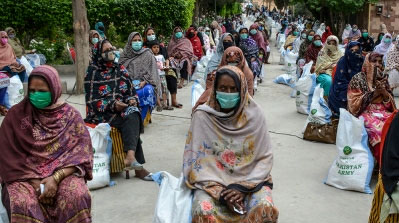THE Covid-19 pandemic is affecting Indigenous communities to a disproportionate degree in many countries. In this special feature, we bring into focus some of the mental health effects and challenges that Indigenous people face as a result of the pandemic.
Since the pandemic started, it has become increasingly clear that Covid-19 affects certain communities to a disproportionate degree. Race, biological sex, age, and socioeconomic status are some of the factors that can amplify the impact of the new coronavirus.
As experts have pointed out, the Covid-19 data for Indigenous communities in the U.S. are reported inconsistently. This is partly due to racial misclassification.
This confusing way together with the fact that the federal government does not collect data on all ethnicities and races equally across the country, makes it difficult to gauge with precision the impact that the pandemic is having on Indigenous communities in the U.S.
However, taking the still incomplete data concerning Covid-19 cases and deaths together with established information about social determinants of health in these communities indicates that the pandemic is hitting Indigenous people particularly hard.
COVID-19 TRACKER CAN HELP YOU BETTER UNDERSTAND YOUR LOCAL RISK: There are many statistics available regarding the Covid-19 pandemic, although they aren’t necessarily well coordinated at the national level.
With so many numbers being available, it can be difficult to understand what they mean, how they work together, and how to apply them. However, experts say a more unified, national approach is essential in getting the pandemic under control. An organization is attempting to solve this situation.
The map makes it simpler to make apples-to-apples comparisons between local communities and visualize your actual risk level. In the United States, however, we have numerous responses, and they’re “disjointed,” Halkitis says. “Without a unified response, the country as a totality cannot get the virus under control,” he said. Instead, we’ll continue to see regional outbreaks that spread to other regions.
RAW MILK MAY HARBOR ANTIBIOTIC-RESISTANT GERMS: Analysis of raw milk samples bought in the United States found small numbers of beneficial bacteria alongside potentially dangerous antibiotic-resistant bacteria, which increased in number when left at room temperature.









